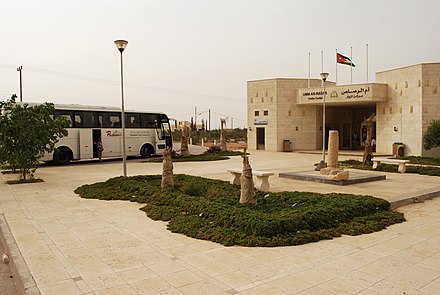Um er-Rasas - Jordanian archeological site

Understand
Umm ar-Rasas contains ruins from the Roman, Byzantine, and early Muslim civilizations. The majority of the site has not been excavated. Among the portions excavated so far include a military camp, and several churches. For its unique blend of civilizations, Um er-Rasas was inscribed as a UNESCO World Heritage Site in 2004.
The most important discovery on the site was the mosaic floor of the Church of St Stephen. It was made in 785 (discovered after 1986). The perfectly preserved mosaic floor is the largest one in Jordan. On the central panel hunting and fishing scenes are depicted while another panel illustrates the most important cities of the region (including Kastron Mefaa, Philadelphia, Madaba, Esbounta, Belemounta, Areopolis, Charac Moaba, Jerusalem, Nablus, Caesarea and Gaza). The frame of the mosaic is especially decorative. Six mosaic masters signed the work: Staurachios from Esbus, Euremios, Elias, Constantinus, Germanus and Abdela. It overlays another, damaged, mosaic floor of the earlier (587) "Church of Bishop Sergius." Another four churches were excavated nearby with traces of mosaic decoration.
Get in

Get around
See
Do
Buy
Eat
Drink
Sleep
Connect
Go next
Umm ar-Rasas
Date Time:Please wait...Timezone:Asia/AmmanCoordinates:31.50, 35.92
Amman
Primary administrative division
